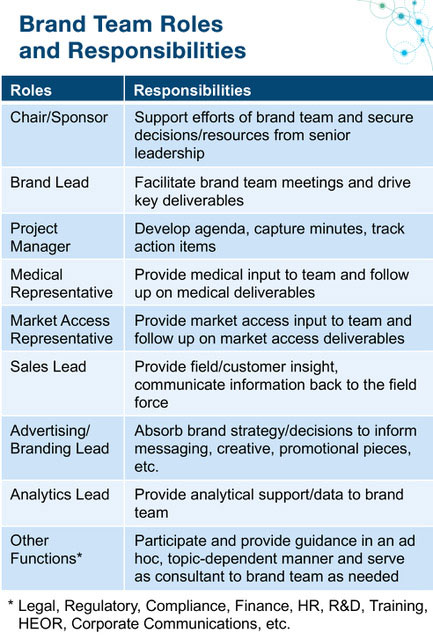For those of you following closely (thank you!), you may recall that in an earlier e-conversation — 21st Century Commercialization — More than a Point in Time! — we defined commercialization as neither a function nor a process.
Rather, we think of it as a “mindset” — something present from the very beginning of product development that is baked into the entire organization, in concert with the overall corporate strategy.
This suggests — no, requires — that the commercialization teams be fully integrated into a company’s enterprise-wide strategic efforts (without overburdening calendars or nimbleness). It’s well documented that there is just one opportunity to launch a product well, and the appropriate creation and management of these teams is therefore essential.
So, what do these commercialization teams look like and what role do they play?
First and foremost, the focus of any team has to meet the business objectives of the company and support the stage of the product in development. That begins with the executive team articulating a clear vision and overall strategy which, taken together, guides teams in making the right decisions.
A finely-tuned organization has many teams working in concert to bring a product through development and commercialization. We will discuss only a few of them here…
- The program team is the highest-level strategic forum for an asset in development. This team is focused on all of the overall registration and associated development activities for a product. Not only does a program team collaborate cross-functionally, it often manages the resources for development and reports directly into R&D, if not the executive team.
- The brand team is an equally important team on the path to commercialization. It is often assembled in late Phase 2 or early Phase 3 (two-three years pre-launch) and needs to play a role in early decision-making to ensure the building blocks for success are in place well before launch. It will inform the strategy for the life of the brand.
The brand team is led by marketing and also includes cross-functional representation from those areas that have input or insights into various aspects of the brand.
- The launch team is formed much later (within 18 months or so leading up to approval), when it is clear the product is going to be filed for registration and planning for market introduction becomes the priority. It is very operational and focused on the key launch deliverables that need to be in place and executed to promote and distribute the product.
The brand team is the “architect” of commercialization and is responsible for:
- Driving all aspects of the brand’s success, including evaluating, escalating, and making critical brand commercialization decisions, with the goal of achieving strategic and company objectives
- Driving the brand planning process, from insight gathering to brand strategy development to tactical prioritization
- Harnessing deep market and customer insights and using these to determine implications for the overall brand plan
While every company and asset will be different, in terms of roles and responsibilities, the following expectations of each function can help get the team started. Some of these may be ad hoc participants. Other functions may be brought into the brand team as needed, depending on the agenda.

In the interest of completeness, I asked The NemetzGroup commercialization experts Lori Horvat and Jennifer Riley to share their thoughts on how to ensure this structure actually works, particularly for biopharma organizations creating their first brand team. Here is what they recommended:
Ensure that…
…a clear team charter is established, understood, and agreed upon by all members and leadership.
…the roles and responsibilities between the brand team and launch team are clearly defined.
…the right team members are selected. These individuals must have adequate mindshare to devote to the team, be prepared for meetings, and be empowered to represent their function in brand team decision-making.
…brand team agendas are sent in advance. Ideally, a month prior, so market research readouts or discussions of strategic implications can align with timing of brand team meetings.
…the team meetings are structured to focus on discussion and decision-making, not information presentation (pre-read documents can be helpful in this regard).
…a central, shared drive is established to capture meeting minutes, including key decisions and associated materials. This will serve as “the” forum for cross-functional collaboration on the brand strategy.
…communication channels exist between the program team and brand team, as a means of maintaining overall alignment with corporate goals.
Final Thoughts
Participation in these teams should be viewed as a fun, exciting opportunity, one that not only contributes to our essential mission of bringing important therapies to patients, but also provides a core career development opportunity that helps us grow professionally.
It is incumbent upon the principals of these teams to demonstrate their best leadership skills — to maintain the strategic direction, to ensure the milestones are met, and to engage each member in a fulfilling career opportunity. When the leader “believes,” the team members will follow!